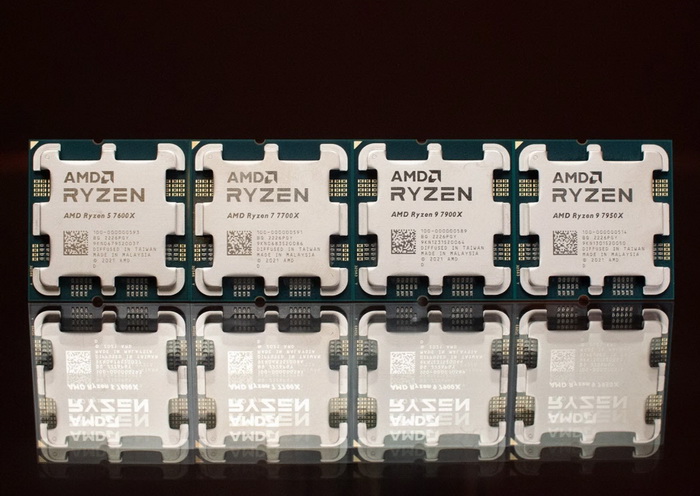INTRODUCTION

On the 27th of September AMD unveiled their latest Zen 4 AM5 (codename Raphael) desktop processor line which includes the Ryzen 5 7600X, Ryzen 7 7700X and Ryzen 9 7900X and 7950X models. As was expected even though the 13th generation of Intel desktop processors is almost here the latest Ryzen desktop processors with their high-performance and low power consumption didn't fail to impress all audiences from casual users and gamers to enthusiasts and professionals alike. Still at the time only the Ryzen 7 7700X and Ryzen 9 7950X desktop processors had arrived in the lab (reviews here/here) and so after spending almost a week with the Ryzen 5 7600X and Ryzen 9 7900X models its finally time for me to share my results with all of you.
For more than 50 years AMD has driven innovation in high-performance computing, graphics and visualization technologies. Billions of people, leading Fortune 500 businesses and cutting-edge scientific research institutions around the world rely on AMD technology daily to improve how they live, work and play. AMD employees are focused on building leadership high-performance and adaptive products that push the boundaries of what is possible.
With the entire Ryzen 7000 Series of Zen 4 AM5 (codename Raphael) models AMD has a clear aim, to win over consumers from all segments of the market, primarily gamers, enthusiasts and professionals. According to AMD the new Ryzen 7000 Series (Zen 4) which is based on the LGA1718 socket boasts an +13% increase in instructions per cycle/clock (IPC) together with an increase of up to 800MHz in core clocks both of which translate to a single core performance boost of up to +29% compared to the previous 5000 Series (Zen 3) generation. Performance is not the only thing AMD has moved forward at however, power consumption has also been dramatically improved since Zen 4 CCDs (Core Complex Dies - 70mm2 size - 6.5 billion transistors) have moved to an 5nm process (6nm for the I/O Die - 122mm2 size - 3.4 billion transistors) resulting in a very appealing 40% average gain in performance-per-watt (AMD Eco Mode also allows you to manually reduce the TDP of the CPU via the BIOS or their Master software). The entire Ryzen 7000 line (Zen 4) also sports integrated RDNA2 graphics which sport 2 compute units, 4 Asynchronous Compute Engines (ACE) and 1 Hardware Scheduler (HWS) with support for both HDMI v2.1 (HFR/48Gbps FRL/DSC/HDR10+/VRR) and DisplayPort v2.0 (Adaptive Sync/DSC/UHBR10/HDR) outputs. AMD has also further tweaked their infinity fabric technology and so now instead of the 1:1:1 approach (FCLK/UCLK/MCLK) of the previous 5000 Series (Zen 3) the new 7000 Series (Zen 4) uses an auto:1:1 approach meaning that it keeps the memory controller with the RAM at an 1:1 ratio whereas Infinity Fabric is set between 1600-2000MHz. This ensures optimal cooperation between the new Zen 4 CPUs and DDR5 RAM, especially low-latency modules following the EXPO memory certification by AMD. The EXPO technology by AMD is similar to XMP but aside being licence and royalty free it's also optimized for the new Zen 4 CPU line (up to 11% gains in gaming). As for the Ryzen 5 7600X and Ryzen 9 7900X desktop processors these are 6/12 core, 12/24 thread models with a maximum TDP of 105/170W (230W max socket power), 4.7GHz base clock, 5.3/5.6GHz max boost clocks and a TjMax of 95 degrees Celsius (L2 cache is set at 6/12MB whereas L3 cache is set at 32/64MB). So, time to see how these two compare not only to the Ryzen 7 7700X and the Ryzen 9 7950X but many past desktop processor models.

 O-Sense
O-Sense







.png)

